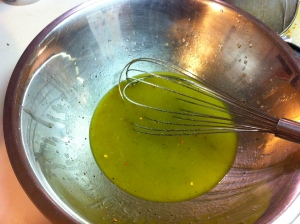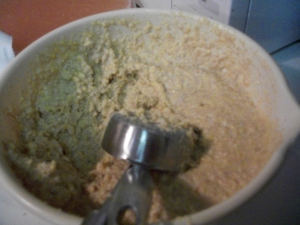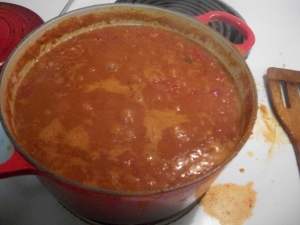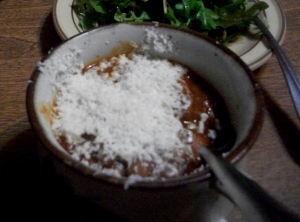There are some things about the West Coast that I don’t think I’ll ever get used to (to which I’ll never get used??). For example, the other day, one of my students saw what I was eating for lunch and said, “Oooh! Quinoa tabbouleh!”
Now, when I was 15, I didn’t know of the existence of either quinoa or tabbouleh. If I had known of their existence, I would have reserved such knowledge strictly for use in games of Scrabble. I certainly never would have imagined eating either of those two things, let alone wanting to.
Clearly, I’m older now. It’s doubtful that I’m any wiser, but I at least have the good sense to enjoy quinoa tabbouleh. Still, there’s part of me that’s a little disconcerted that any red-blooded American teenager would look upon a whole-grain salad as a cause for culinary excitement. Imagine my consternation, then, when a SECOND 15-year-old student saw my lunch the next day and said, “Ooh! Quinoa tabbouleh!” (In fact, I had been eating quinoa with bok choy and tofu, but that’s neither here nor there.) One quinoa-lovin’ teenager is a freakish aberration; two quinoa-lovin’ teenagers is a Militant Carnivore’s version of the Twilight Zone.
makes enough tabbouleh to feed a bunch of quinoa-lovin’ teenagers
- 2 cups uncooked quinoa
- 1 bay leaf
- 4 large shallots (there should be about 4 c sliced)
- 2 bunches of green onions
- 1 pint of grape tomatoes
- 2 bunches of parsley
- 1 handful of mint
- 1 1/2 c of mixed black and green olives (I like to include Kalamata olives as well as garlic-stuffed green olives)
- juice of 6 lemons
- red pepper flakes, to taste
Rinse the quinoa thoroughly under cold running water: Quinoa is coated with saponin, most of which is removed in processing, but it’s good to rinse it well before cooking to remove any traces. Otherwise, you’ll end up with soapy tasting quinoa. Put the quinoa, bay leaf and a healthy pinch of salt in a medium-sized pot and cover with water by an inch; cover and place over high heat. When the water comes to a boil, reduce to a simmer. Cook until the quinoa has absorbed most of the water and a spiral appears in each grain of quinoa, about 20 minutes; the quinoa should be tender. Drain the quinoa thoroughly and discard the bay leaf. Put the quinoa in the largest mixing bowl that you have.
The key to this or any tabbouleh is to season it with reckless abandon: Add more lemon, pepper and red pepper than you think prudent. Also, there should be at least as much non-grain stuff (onions, herbs, olives, tomatoes) as grain. The olives, by the way, are the innovation of my Lovely Vegetarian Wife’s aunt. A master stroke: Once you try it, you’ll wonder why you ever ate tabbouleh without them.
Peel the shallots and slice as thinly as possible (I use a mandoline). Put the shallots in a medium-sized mixing bowl, toss with several pinches of salt and set aside.
Wash and trim the green onions; chop into 1/2-inch pieces. Add to the quinoa. Wash the tomatoes and cut in half (or quarters or slices—knock yourself out); add to the quinoa and green onions.
Wash and dry the parsley and mint thoroughly. Remove and discard the stems. Chop the herbs rather finely (but don’t kill yourself), then add to the quinoa mixture.
Using the flat side of a chef’s knife, flatten the olives with pits. Remove and discard the pits, then chop the olives roughly. Add to the quinoa mixture. Slice up the garlic-stuffed olives, then roughly chop. Add to the quinoa mixture. Add the sliced shallots to the quinoa mixture.
Put the lemon juice into a medium-sized mixing bowl. Slowly drizzle in the olive oil, whisking constantly, until a creamy salad dressing is formed (you’ll need at least a half cup). Add a judicious amount of salt (remember: there are pre-salted shallots in this tabbouleh, as well as olives), lots of freshly ground black pepper and the red pepper flakes.
Toss the tabbouleh with the dressing. You can eat it immediately, or let it ruminate for a while. I like to make a huge batch on Sunday and eat it for lunch all week, much to the excitement of my students.































